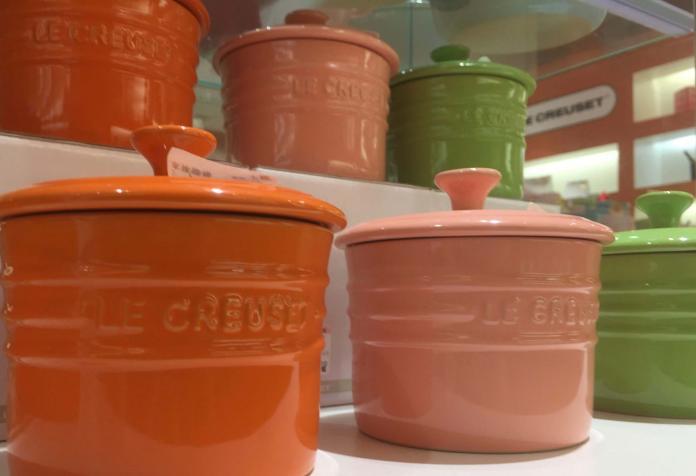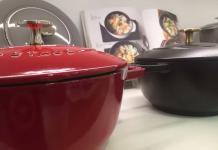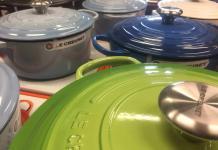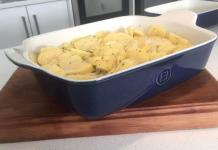Why Cook With Ceramic Cookware?
If you want to roast, bake, reheat, microwave, or freeze your meals, I’ll bet you’ll reach for your nearest ceramic baking dish. However, why would you use ceramic ware over other materials such as glass or stainless steel? Well, in this article, you can learn the benefits of ceramic cookware.
Table Of Contents
- Quick summary of benefits
- Uses of ceramic cookware
- History
- Pottery vs. ceramics
- Pros and cons of ceramic cookware
- Conclusion
Here Are A Few Quick Benefits Of Ceramic Cookware. See The Table Below.
Multiple Cooking Methods | You can use ceramic cookware for dry and wet cooking. Baking and roasting are two popular uses for ceramics. |
Even Heat Distribution | Even cooking prevents hot spots and food burning. |
Cheap | Sure, some ceramic brands are expensive, but most cookware is inexpensive. |
Safe Cooking Surface | Ceramic cookware offers a natural, food-safe cooking surface.. |
Easy To Clean | You can use most scrubbers on ceramic dishes. You should be able to remove most stuck-on food by soaking it in a little warm, soapy water. |
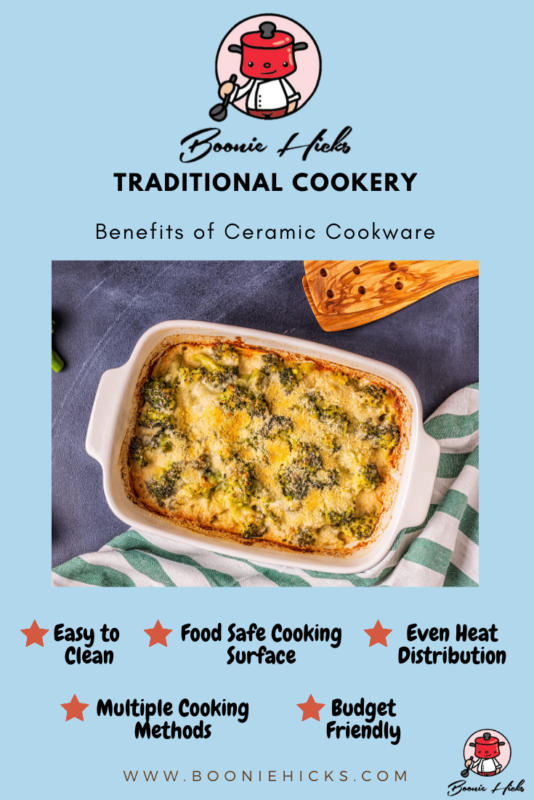
What Is Ceramic Cookware Used For?
Ceramic cookware is also called ceramic bakeware. Yes, ceramic baking dishes are great because the material evenly distributes heat, preventing hot spots and food from burning outside while undercooking in the center.
However, you can also use ceramic hollowware for other cooking methods, such as slow cooking and roasting. Below is a simple infographic on the different cooking methods for ceramic cookware.
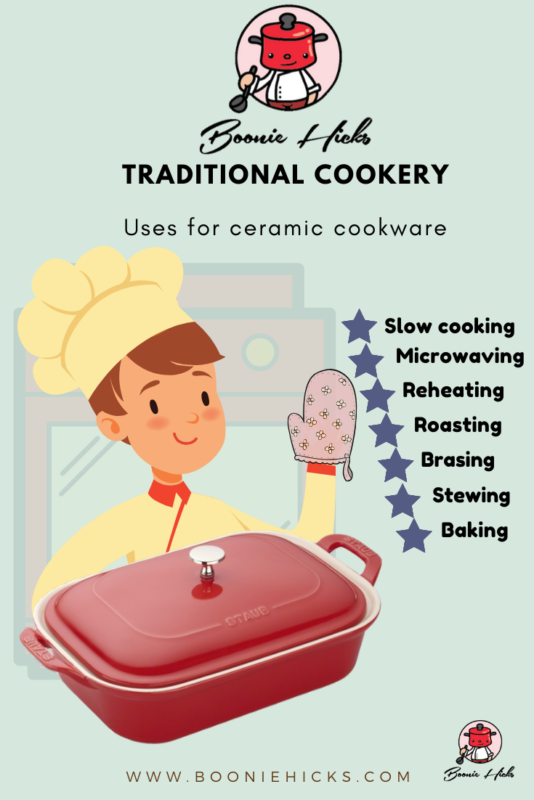
Humans Have Used Pottery As Cooking Utensils For Thousands Of Years.
Firstly, let us look at the use of ceramics throughout history. It is safe to assume humans have been using ceramic dishes for a long time.
Pottery is one of human history’s oldest cooking and food storage surfaces. Ceramic pottery is one of the oldest surviving artifacts, and its purpose was to store food and liquid.
Many technological discoveries and early pottery techniques came from Asia and then west to India, Mesopotamia, and Europe.
Some of the earliest known examples of pottery date back to 18000 BCE in the Jiangxi province in China. You may find our article on the Evolution of Cookware interesting if you want to learn more about the history of early pottery.
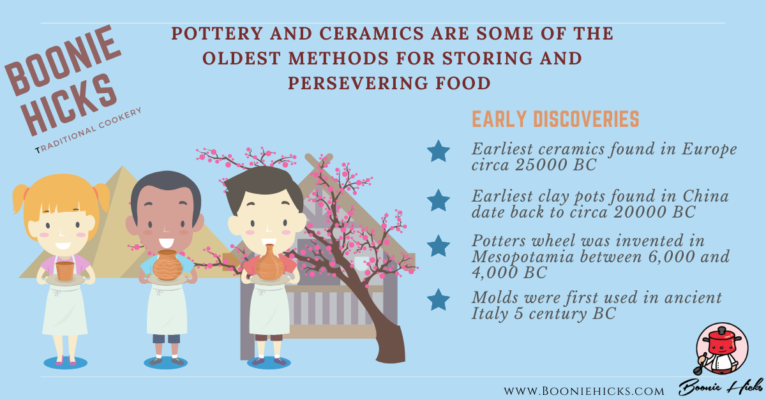
Pottery vs. Ceramics, What Is The Difference?
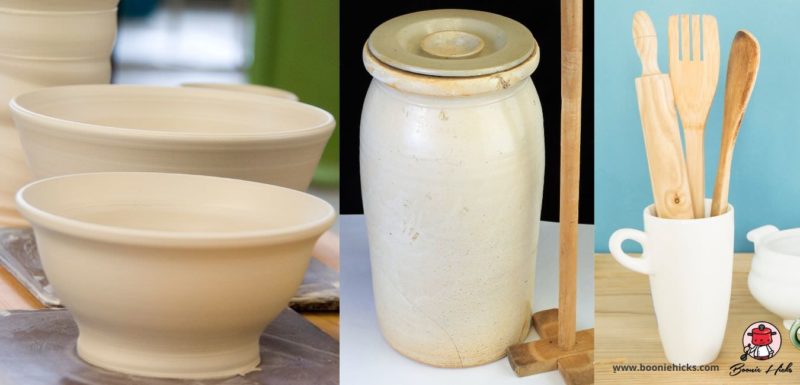
People use pottery and ceramics interchangeably. Some may refer to ceramics for all glazed pottery. At the same time, others may call small glazed vase pottery. However, you may see a variety of ceramics in your home, for example, ceramic tiles and sinks.
Generally speaking, pottery is the earliest form, when clay was fired at a lower temperature or not fired at all. On the other hand, ceramic pottery requires much higher temperatures.
Even in cookware, we can divide clay-based cookware into three categories because of the temperature of the firing process:
- earthenware
- stoneware
- ceramics
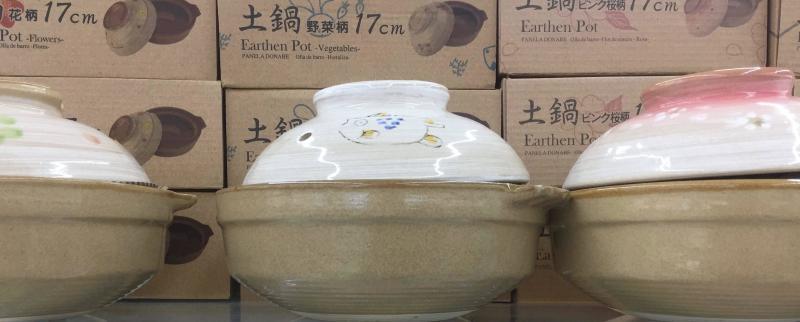
What Are The Disadvantages Of Ceramic Cookware?
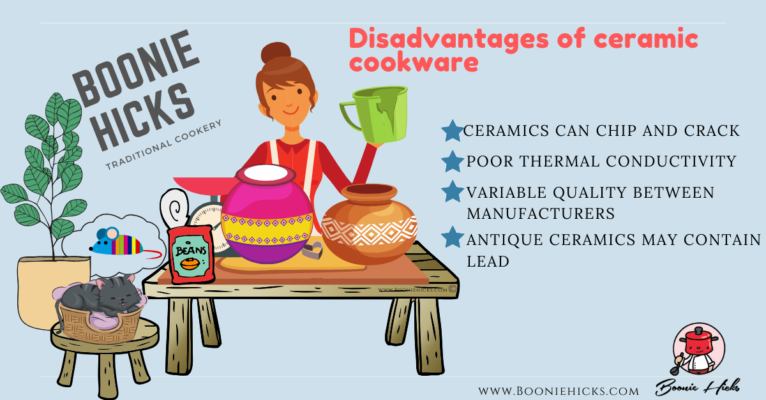
Breakable
Both your bakeware and ceramic kitchen tiles are in danger of cracking if you drop your ceramic cookware from a height. However, some brands are more shock-resistant than others.
Poor Thermal Conductivity
Most ceramic cookware is unsuitable for direct heat. Cookware will not work on an induction element. And if placed on a gas or electric hob, the ceramic cookware may crack.
Varied Quality
Ceramic dishes are everywhere, and the quality and price vary significantly between brands. If buying at a store, ask to open the box and inspect the product for defects. Or if buying online, check the return or replacement policy before purchasing.
Toxic?
Ceramics are non-toxic and food-safe. However, it is best to mention some ceramic glazes may contain lead and cadmium. Today, regulating bodies should prevent the importation of this cookware. However, if in doubt, check with your food and drug regulation authority.
Many brands may advertise their product as lead and cadmium-free. And this is why I prefer trusted brands such as Emile Henry.
The Main Benefits Of Ceramic Cookware:
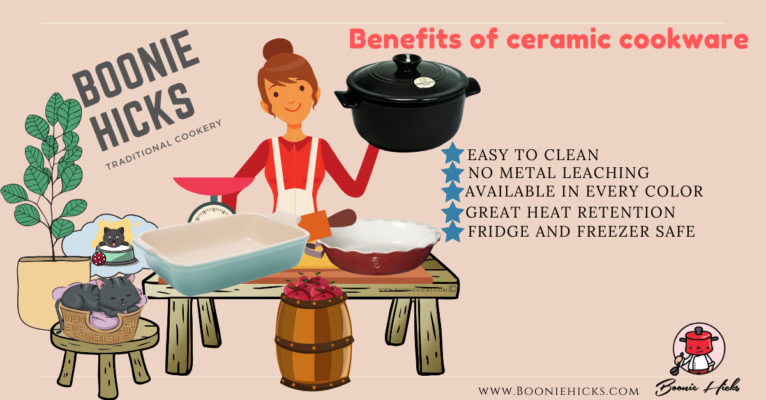
Versatile
Opt for ceramic dishes for bakeware that can handle high temperatures without exploding. Since ceramic glaze forms a nonporous layer, you can use your ceramic containers to store food in the fridge or freezer.
Then, it was reheated in the oven again when needed to answer one of our earlier questions. Can ceramic cookware be used in the microwave? Yes, it can. However, gold-rimmed plates are a no-go.
Quality And Heat Distribution
Ceramic baking dishes have good thermal density, especially the higher quality, usually thicker products. Thermal density usually means ceramic ware takes longer to reach the desired temperature. However, once at temperature, heat spreads more evenly. I am impressed with my Emile Henry ceramic dishes. And they hold heat well.
Durability
Ceramic glazed clay is one of the sturdiest materials available today. It also maintains its luster and requires very little maintenance. Ceramic dishes can last for many years and still look great.
Low Maintenance
As you know, ceramic dishes are easy to clean. Scouring pads or washing liquid should not damage the surface if food sticks to the surface.
Attractive
Ceramic cookware can be bright and cheerful. You can display bakeware on shelves or as decorative pieces. And they also look great as serving dishes.
Non-Reactive
Ceramic cookware is non-reactive, meaning you can cook acidic foods such as tomatoes without the risk of tainting your food. However, this is not the case with metal cookware, especially cast iron and carbon steel.
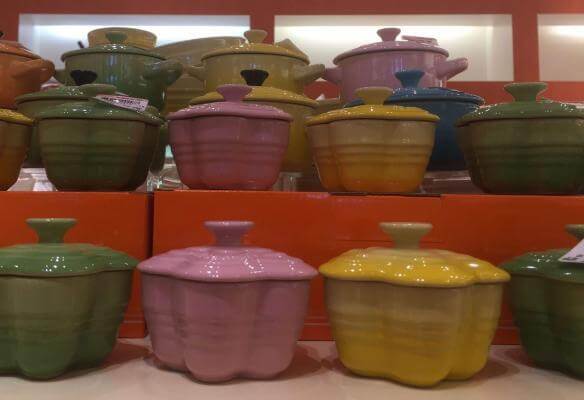
To Summarize. What Are The Benefits Of Ceramic Cookware?
Ceramic cookware has many benefits, including its trendy, modern, and traditional looks. So, no matter your kitchen style, ceramic cookware will look right at home. While other cookware has gone in and out of fashion, ceramic dishes have always remained popular and one of the most used items in the kitchen.
You can use ceramic ware in the oven, fridge, or freezer. Ceramic dishes will not shatter when exposed to high heat. And since the earthenware has a nonporous glaze. It is non-reactive cookware to acidic foods. And it is considered food-safe. Are you looking for trusted ceramic ware? Then, looking past Le Creuset, Staub, and Emile Henry is hard. They combine beauty with durability that you will be sure to love.
References
- Questions and Answers on Lead-Glazed Traditional Pottery https://www.fda.gov
- Glazed clay pottery and lead exposure in Mexico https://www.ncbi.nlm.nih.gov/pubmed
- What’s the safest cookware? https://www.mnn.com
- Safe and Healthy Cookware: What You Need To Know When Choosing Non-Toxic Pots & Pans https://foodrevolution.org


